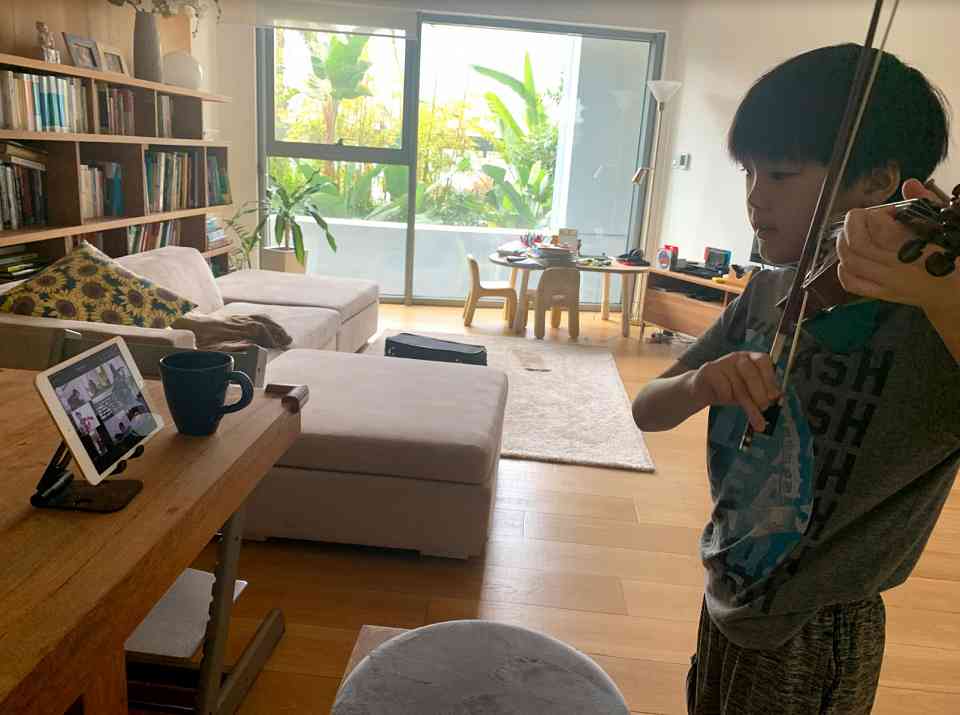
As the Coronavirus spreads all across the globe, here are some insights from Suzuki Music Academy of Hong Kong, where we’ve been working with a combination of in-person and video lessons since late January. I hope our experience can help inform yours in the coming weeks.
Talk to your families
Each family is different. First decide what you, as a teacher, are comfortable with, and then let the families know. We have some students who are not in Hong Kong, so we are teaching by video in various time zones, as well as by video here in Hong Kong, for the families who prefer to stay at home. Families that don’t mind coming in have had in-person lessons as normal. Many have no other activities at the moment and appreciate our Suzuki school as a reason to get out of the house. This has let us maintain almost all of our private lessons.
In-person lessons
We have implemented new rules on our campus, influenced by similar recommendations from the SARS outbreak, which struck Hong Kong in 2002. They are:
- Take off your shoes before entering our school
- Wash your hands before your lesson
- Wear a mask during the lesson
Masks are a normal part of Hong Kong life, we wear them when we are sick, and the expectation here right now is to wear them on a daily basis. We also keep tissues and hand sanitizer in every studio.
Online lessons
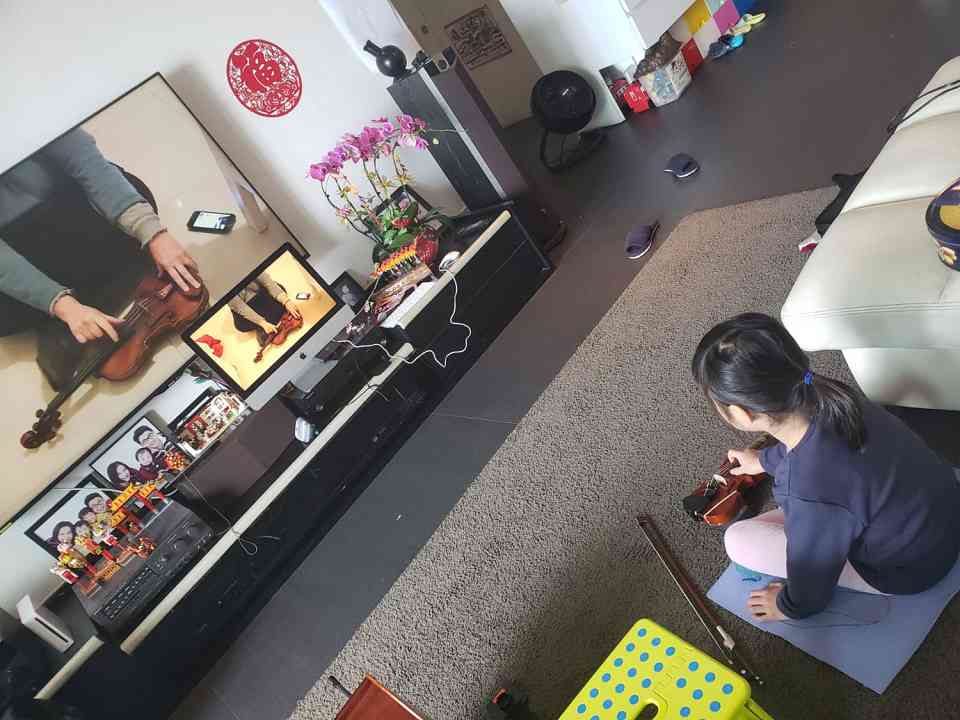
While I definitely prefer in-person lessons to online lessons, continuing our progress online is proving invaluable. We are lucky that our students have access to good quality and reliable wifi and have devices that enable them to have successful lessons via video call. Teachers at SMAHK have used Google Meet, Skype, FaceTime, and Zoom, and we are always taking recommendations about other platforms to try out. So far my most successful lessons have been on Skype and Zoom, but each teacher in our school has had different experiences on different apps, so you may need to try more than one to find out what works for you.
Avoid group gatherings
SMAHK canceled all group gatherings. We decided to postpone our chamber music ensembles, and had no choice but to cancel all public performances, as well as our early childhood classes. We are going forward with orchestra, in hopes that we can have an “informance” at the end of the term.
Carry on with group classes online
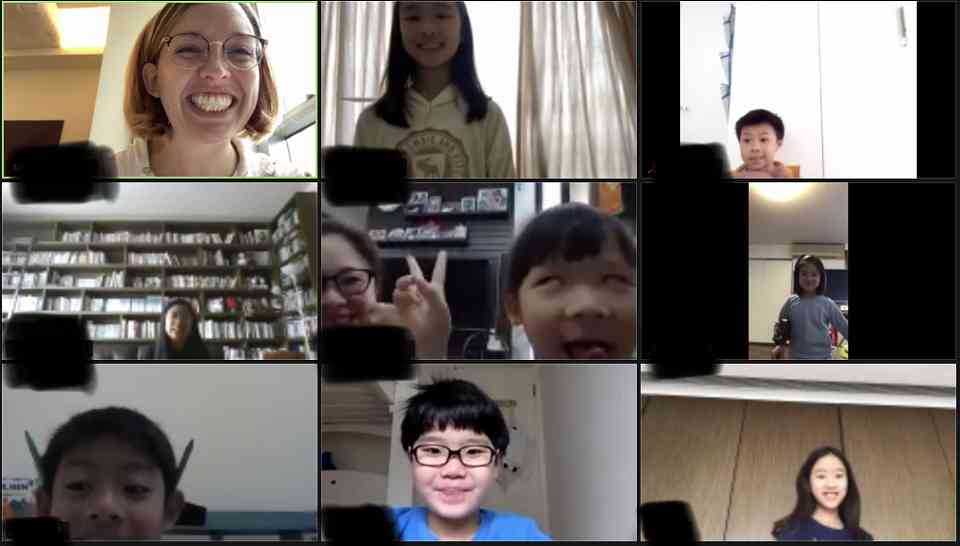
Suzuki education really relies on group classes, and we feel strongly that we should not neglect this part of the philosophy. Every two weeks we are making a new plan for our group classes. So far, we have:
- Made individual videos for group lessons (pre-recorded by the group class teacher)
- Had an at-home concert (in lieu of a performance at an elderly home)
- Had a video chat with a group:
- Each student got to play a solo for the other students—it was the first time they had seen their friends in weeks!
- Some group classes have a regular group class online
- In the near future we will have a small “Suzuki Olympics” group class where we choose a small activity which focuses on one technique at a time. Who knows what we’ll do next!
- When we try to play together, the lag is noticeable and different for each student. Our best solution has been to mute the microphone of each student and have them only listen to the teacher. We cannot hear or respond to what they are playing, but it does at least give the students a chance to play together with the teacher.
We are really working our creativity to keep our online lessons engaging for the students.
Setting up online lessons
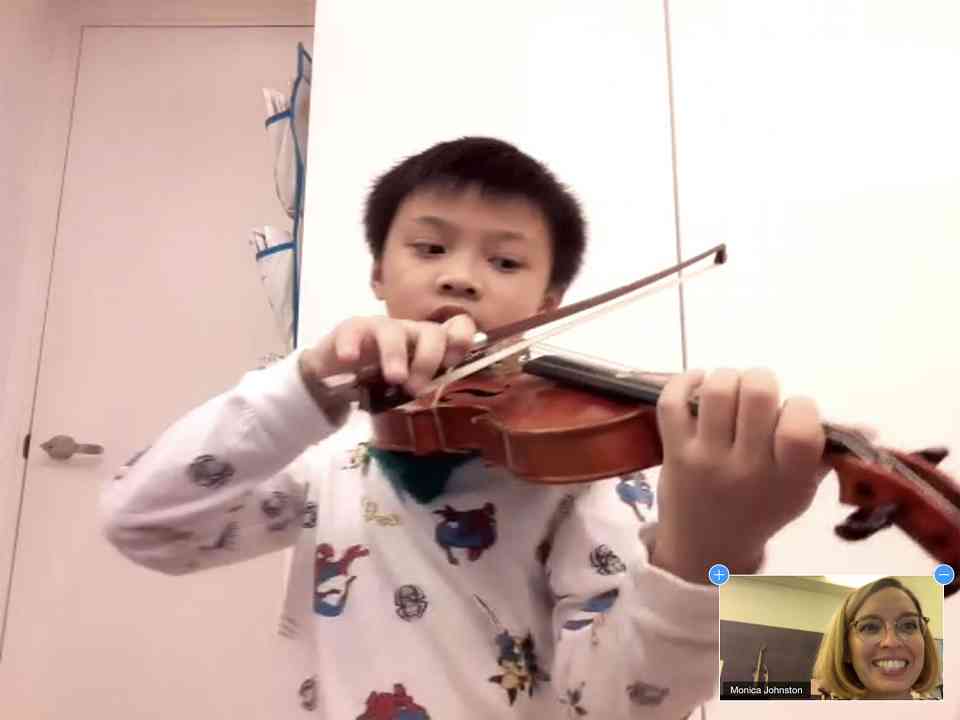
I recommend that you make some clear guidelines for the physical set-up of your online lessons. The instrument should be fully visible, and at some times the whole body should be fully visible. The room should be light enough for you to see. The camera should be eye-level with the student, not coming from an angle below or above. The Suzuki parent should still be present for all lessons, and if possible, other family members should not be in the room, talking or making noise (no TV!). Agree to a time and platform, and be strict with punctuality. Initially you may need some wiggle room to figure out how it all works, but treat the online lesson with the same level of professionalism as you would an in-person lesson.
Tips for teachers
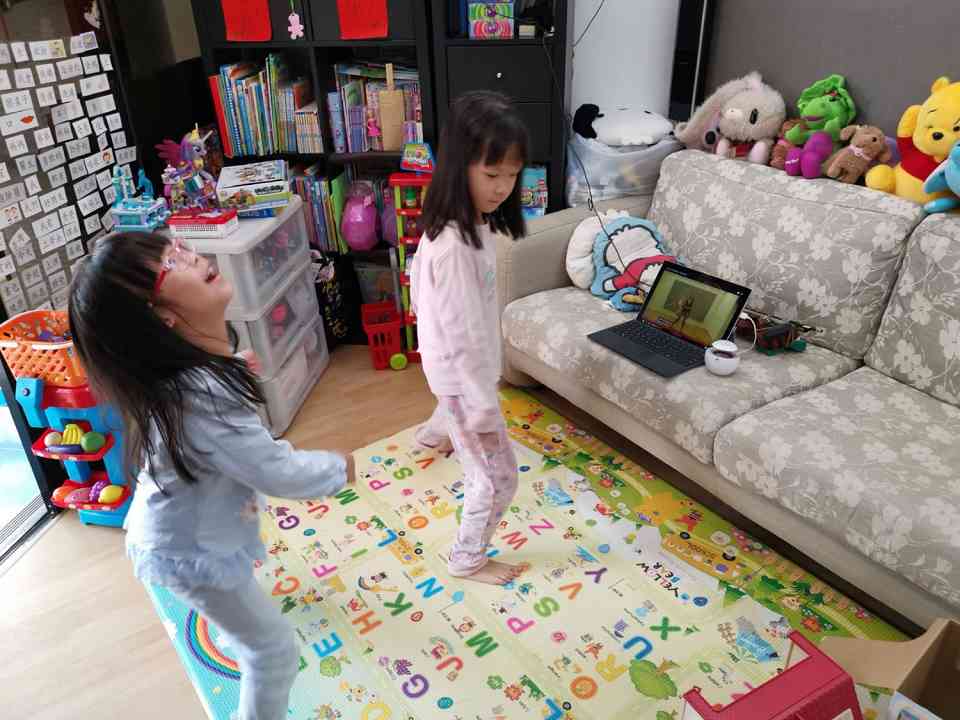
- Take care of yourself and your family first. Do what you feel comfortable with, and respect what your students and their families are comfortable with. This is uncharted territory for us all.
- Charge your devices!
- Keep your music nearby. Referencing a bar number makes explanations go by much more quickly.
- Keep something to write with handy, so you can write and show when an explanation or demonstration isn’t working out. I use a small dry erase board.
- Keep an open mind, stay positive, and be flexible! Our families need us right now. Consistency is key!
- Maintaining a feeling of community will help you and your students stay connected, and keep at least one routine going in their lives.
Frustrations
Teaching online is an incredible feat…could you have imagined this when you were a student? It does come with some difficulties, so I’ll list what I find frustrating:
-
Tuning: It’s impossible to practice effectively on an out-of-tune instrument. If you can teach your parents how to tune, or set up a “tuning time” where they bring in the instrument, it will make a big difference.
-
Tone: It is so difficult to listen for quality tone on our devices.
-
Physical adjustments: We constantly remind our students about posture, technique, hand shape, etc. We cannot get the full picture of what’s going on if the camera angle is not good, or the video freezes, and it’s annoying when I cannot adjust a bow hand, or straighten a bent wrist through the screen!
-
Focus: Visual distraction is a hard thing to combat when we aren’t in the same room as our students! We don’t know what else they see, or what’s happening beyond the camera. They also really love to look at themselves on the screen, rather than look at their instrument while they play.
-
Learning environment: The environment of a lesson at home is different from a lesson in my studio. For example, where the Suzuki Parent is sitting is often in a different place, and I usually can’t see the parent, or make eye contact to point out small things like I would in my studio, even if I know they are there behind the camera. Communicating with the parent has changed.
-
Sound delay/image delay: Sometimes our connection is crystal clear, other times there is a big delay. The response time through the screen can be frustrating, both for me and for my students. It is also impossible to play together.
-
Demonstrating: Trying to show my students what I’d like from them requires a lot of adjusting from me. I have my iPad on a music stand at head/shoulder level. When I’m speaking, the camera sees my face. When I’m demonstrating, I swivel it to view only my viola. When I’m focusing on bow technique I sometimes have to step back to show my whole arm. For left hand technique, I have to adjust my body so that they can see my fingers clearly. There is no perfect angle, and the student can’t move around to get their best view as they would in-person. Sometimes, I have to make a separate video after the class to explain in better detail.
I already see our community stepping up and sharing ideas, I can’t wait to see what we can all come up with!
I asked our SMAHK students and parents what they think of our online lessons, here are their responses!
Do you like online learning for our Suzuki classes? Why or why not?
“I’m okay with it but still do recommend doing it with all of us in the same location.” – Hermione, 12, violin
“No, because it is boring and it wastes time!” – Stephen, 9, viola
“Yes. It’s better than nothing.” – Sue, viola mom
“I think learning at Suzuki school is better. I cannot see the teacher as good as at school. The image is laggy on screen.” – Hugo, 8, cello
“I like it. It’s funny to see all others and love I can mute myself in middle of class.” – Cosette, 9, viola
How has your instrument practice changed since school was cancelled?
“We have more regular time to practice.” – Mrs. Huang, viola mom
“More time to practice.” – Cosette, 9, viola
How has your relationship with your child adjusted? What about with siblings?
“I spend more time with my children and more time at home. Our relationship improves.” – Mrs. Huang, viola mom
“Should be more tense as we are stuck at home. However, I set a clear aim with her with the help of the teacher so she is clear what she needs to do. Having less on her plate also helps a lot.” – Winnie, viola mom
What is more challenging online than in person?
“There can be more than one person speaking and there might be background noise.” – Aslan, 10, viola
“It’s harder to pay attention to everything happening in class because there might be a lot of distractions at home.” – Hermione, 12, violin
“Efficiency of teacher’s teaching (ex. sound and tone)” – Sue, viola mom
“Tune the viola.” – Ashley, viola mom
“Sometimes when you want to demonstrate something, it’s harder to see or explain through the screen, but in real life, when you’re right next to the person, it’s easier.” – Emma, 11, viola
What is your favorite part of online lessons?
“When everyone gets to play together.” – Cosette, 9, viola
“That we can continue learning even though we can’t go there to attend class.” – Emma, 11, viola
Do you appreciate the consistency? Is it too much extra work in addition to your child’s school work and your own work?
“Not really but a bit tired to get many information and jobs using electronic device.” – Sue, viola mom
“I think keeping everybody’s life as normal as is before is very important, particularly since we do not know how long this condition may continue. Hence, I really appreciate the effort of SMAHK to have this option of learning online.” – Andrew, cello dad
How do you feel about our group class arrangements?
“I think it is difficult for all kids to play at the same time online in the same way we have been doing in normal group classes. However, SMAHK group class arrangements allow each kid to see each other’s face, which I think is actually quite a happy thing for Hugo since he has not seen them for such a long time, and allow each kid to do a bit of things one by one together. It also allows each kid to showcase what he or she has learnt to other students, which is kind of moral support or encouragement to each other.” Andrew, cello dad
“Good. Every kids could play something.” Hugo
“Yes. It’s fun for the online home concert. In fact it’s more comfortable at home than in the group class classroom.” Cosette, 9, viola
What else would you like to share?
“I don’t want an online Lesson and that’s that!” – Stephen, 9, viola
“Online learning is helpful, however, sometimes it can be confusing. For example when many people are trying to play the same things at once, not being able to hear anybody can confuse people. Hearing exactly how something sounds like is also more challenging online.” – Ha Jin, 10, viola
“I don’t feel any difference in private class but group class was confusing when all people had to do play at the same time and felt bored to wait when others was playing.” – Yeh Joon, 7, viola
What advice would you give to other Suzuki families around the world about online lessons?
“Make sure you’re in a quiet place.” – Aslan, 10, viola
“A good replacement when you have hard time to learn in-person.” – Sue, viola mom
“It’s a good alternative during this period. It helps to keep kids motivation to practice.” – Winnie, viola mom
“Just enjoy it! It is actually a good way to keep life and happiness going.” – Andrew, cello dad







